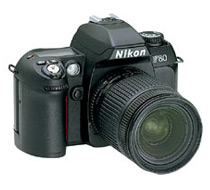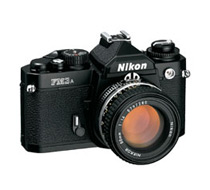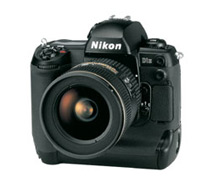04 September 2017
Photography school
Mask, mask, I know you: landscape manipulation with luminance masks
One of the most common situations when shooting a landscape is the inability to cram a scene too wide. dynamic range in one frame. Either the sky is too bright, the earth is too dark. And even if the camera shows that the frame is exposed without overexposure and underexposure, then it is often not possible to process it so that the textured sky appears. For such situations, there are a number of techniques that will allow you to draw out too bright lights in a photo and carefully and naturally fit them into the photo.
04 September 2017
Photography school
Composition in landscape photography
Composition is the most important component of any visual work. And this applies not only to paintings and photography. The same compositional rules apply in almost all visual arts - from sculpture to urban planning. But today we will consider exclusively photography, and landscape photography.
04 September 2017
Photography school
Shooting people traveling
Someone tries to shoot only nature on trips. Someone focuses on animals and plants. But I believe that any place we go to acquires its own special flavor thanks to the people who live there. Coming from a trip and not bringing a single photograph of people means throwing out a huge chunk of information from your visual storytelling. Perhaps the most important piece. Let's figure out how to bring interesting portraits of people from a trip.
August 31, 2017
Photography school
Landscape is the most difficult genre. Preparation and shooting.
Many aspiring photographers find it difficult to shoot a studio portrait. And sports are also difficult to shoot. And weddings are also difficult to shoot. But the landscape is simple. Of course, after all, nature itself tried for you - it created mountains, planted trees, laid canyons with rivers and spilled lakes. The photographer only has to press the button. Only there is one small problem. As soon as the button is pressed and the picture appeared on the camera screen, it immediately begins: "Well, in fact, it was much more beautiful." Why do you think this happens? Let's try to figure it out and find several ways to bring our photograph closer to the image that we saw in nature.
28 September 2016
Photography school
Have you ever thought that photos with a standard 2: 3 aspect ratio for DSLRs are somehow cramped, so you want to look over their edge, look outside the frame, find out what is happening there. And the whole point is that we see much wider, we perceive the world in a panoramic manner. So let's try to shoot such panoramas so that we can then look over all the edges at once.
28 September 2016
Photography school
Against the light. Backlit Shooting
Light can change any scene, and it is very important for a photographer to feel light and understand how to use different positions of sources in relation to the subject in order to create the right mood in the frame. Working with a side or front light is easy. It is much more difficult to work with backlight - the light located directly behind the subject. More difficult, but more interesting. In this article, we will not consider studio shooting, but talk about those cases when there is only one light source, but the most powerful one is the Sun.
Lightweight professional camera Nikon F100 - perfect solution for photographers who do not need the power and saturation of the F5, but who demand guaranteed high reliability on the camera, high speed work, full compatibility with all Nikon / Nikkor optics. It is an extremely convenient camera for the widest range of users requiring 35mm autofocus
professional grade camera. When creating the F100 camera, Nikon undoubtedly managed to find the optimal balance between novelty and continuity, and we are talking about both functional saturation, constructiveness, technical characteristics and about the concept of management.
|
Camera Nikon F80 ranks next to the F100 in Nikon's camera lineup. In terms of control, the F80 model is quite similar to the simplified version of the F100, which not only affects the continuity, but also facilitates sharing these two cameras. The Nikon F80 has everything you need for creative shooting, from a full range of shooting modes to spot metering and aperture repeater. Some inconvenience |
Manual focus cameras
|
Camera Nikon FM3а- further development of Nikon FM2n. The fundamental difference between Nikon FM3а and Nikon FM2n is a combined shutter (shutter speeds can be controlled both electronically and mechanically). Electronic control is used when shooting in aperture priority mode. When setting the shooting parameters manually, the shutter speed is mechanically adjusted. Therefore, the camera can operate without batteries (the built-in exposure meter will not work). The minimum shutter speed of 1/4000 and the shutter speed of full opening of the frame window of 1/250 s are sufficient for any occasion. The camera allows you to make adjustments to the exposure. TTL flash control has also been added, making it much easier to use external flashes... The camera automatically reads the DX code from the cassette. Nikon FM3a camera accessories are compatible with |
Nikon digital SLR cameras
|
Apparatus Nikon D1X and Nikon D1H- development of a successful and very popular Nikon models D1 currently out of production. When upgrading the Nikon D1, the company's designers did not follow the path of creating a universal apparatus, but designed two apparatus, each optimized for its own purpose. The main changes were made to the matrices used in the camera. New products use matrices with extremely high performance. The sensor size of both devices remained the same as that of Nikon D1 (23.7 × 15.6 mm), which is only half the size of a 35-mm frame. The D1X sensor contains 5.4 million elements and has a sensitivity from ISO 125 to 800. The D1H has a 2.74 million pixel sensor with sensitivities from ISO 200 to 1600. LSI system allows fast image processing, |
Nikon Speedlights
Senior Nikon System Flash, Speedlight SB-80DX, supports all flash control modes - 3D Multi-Sensor Balanced Fill-Flash (for all modern Nikon AF DSLRs), D-TTL mode (for Nikon D1x / D1h, D100 series DSLRs), as well as non-TTL automatic mode ( for use on Nikon FM-2, FE-10, FM-10, F55). With cameras that support high-speed flash sync, shutter speeds up to 1/4000 are possible. Along with automatic TTL modes
fully manual mode is available (with power control). Automatic and manual zoom of the flash reflector in the range from 24 to 105 mm allows optimal use of flash energy. All information about flash modes is displayed on a large LCD screen. The head rotates in two directions. For creating beautiful effects you can use the stroboscopic effect. Of the most interesting features of the Nikon Speedlight SB-80DX in comparison with its predecessors, I would like to note the possibility of using it when shooting with lenses with a focal length of 14 mm (with an adapter), as well as the presence of modeling light modes and a built-in wireless remote control receiver.
Lightweight and compact flash Speedlight SB-50DX Supports all major functions such as 3D metering, D-TTL, AF illuminator, wireless control. Unlike other flash units, the SB-50DX is powered by two CR123a lithium batteries. Distinctive feature
Nikon Speedlights SB-50DX - built-in milky screen that can be positioned in front of the raised built-in flash for the simultaneous operation of both the built-in flash, which creates the frontal illumination of the subject, and the attachment flash, which, when the head is tilted up, creates a soft fill light ... The Speedlight SB-27 also implements all the main modes, like the SB-50DX, only short shutter speed sync, stroboscopic mode and support for D-TTL mode are missing. Flash output (guide number 30 to 35 mm) is sufficient for most amateur photography. The flash head only rotates in one direction, but thanks to the fact that it has a built-in fold-out reflector, you will have few restrictions on the implementation of your creative ideas. Automatic zooming from 24mm to 50mm (horizontal body position) and 35mm to 70mm (vertical position).
Speedlight SB-30- unusually light
and a compact flash powered by a single CR123a cell for amateur photographers. It supports both TTL pulse power control and built-in autonomous automation. Also, this flash operates in manual flash power control mode (3 levels - 1/1, 1/8, 1/32). The Speedlight SB-30's light diffusion angle matches the angle of view of a 28mm lens, and the built-in wide-flash adapter allows you to work with lenses from 17mm. The flash guide number is 16 meters at ISO100 (drops to 10 with a wide-flash adapter). The SB-30's built-in dark red filter will be appreciated by professionals working with flash studio lighting. This filter transforms the SB-30 into a remote studio flash trigger.
Simple and inexpensive flash Speedlight SB-22S does not implement modes with test preflashes. Despite this, it produces good results.
The head only rotates vertically within a range of –7 to 90 degrees. A wide-angle adapter is available for widening the angle of coverage. For the convenience of manual operation, non-TTL programs for 4 apertures are offered, the flash range for these programs is indicated on the back.
Speedlight SB-23- a simple flash with a fixed emitter. Has an AF-assist lamp that works with any autofocus cameras and a built-in diffuser.
Macro Speedlight SB-29- Ring flash for macro photography. The maximum guide number is 11. The flash has two emitters, and you can control the power of these emitters (up to 1: 4). You can use modeling light to evaluate the light pattern. Coverage - up to 20 mm. Mounts are available for lenses with 52, 62, 72mm filters, or you can attach the flash to the controller so you can use it
like a normal flash.
Hello everyone! Yesterday the training of the first stream ended ... It's sad - I didn't want to say goodbye at all (Everything was so cool - I look at my photos and photos of the guys in my group - the difference in comparing the first and last tasks is colossal! We are so great))) I am very glad that I passed this course - but I didn't want to go to an open lesson yet (... Read completely
Hello everyone!
Yesterday the training of the first stream ended ... It's sad - I didn't want to say goodbye at all (Everything was so cool - I look at my photos and photos of the guys in my group - the difference in comparing the first and last tasks is colossal! We are so great))) I am very glad that I passed this course - but I didn't want to go to an open lesson yet (I won a certificate for free education!) ... I thought to sleep a little longer ... I am very glad that all this happened - a giant impetus for my further creativity! Good luck to all participants! Come to study - you will be sooooo pleased with the time spent, getting acquainted with the art of photography and the knowledge gained. Thank you)
Ksenia Elizarova, Moscow (nikon)
Student works
Hello everyone! For a long time I doubted whether I needed the "Fundamentals of Photography" course, because my photos were liked by my friends anyway. Now I am very glad that I made the right decision and signed up, because during the classes I discovered huge gaps in my knowledge, which our teacher, Evgenia Khoruzhaya, skillfully and most importantly ... Read completely
Hello everyone!
For a long time I doubted whether I needed the "Fundamentals of Photography" course, because my photos were liked by my friends anyway. Now I am very glad that I made the right decision and signed up, because during the classes I discovered huge gaps in my knowledge, which our teacher, Evgenia Khoruzhaya, skillfully and most importantly simple language helped to make up. And the most remarkable thing is that during the practice, she, one might say, forced her to learn to communicate with the model and control her. This moment was the most difficult for me, because in my life I am not a very sociable person, and therefore I want to say a huge special thanks to Zhenya for giving me so much confidence!
I highly recommend this course to all self-taught people and just those who really want to understand their camera and learn how to take delicious shots!
Svetlana Kaplina, Moscow (nikon)
Student works
It so happened that I had a camera not for the first year, and I did not know how to shoot with it, except in the green mode. There was a thought to go to courses, but it was difficult to choose among the schools, and this idea was postponed to a distant shelf. At an open lesson, which I got by accident, Evgenia's works were shown, and they were so ... Read completely
It so happened that I had a camera not for the first year, and I did not know how to shoot with it, except in the green mode. There was a thought to go to courses, but it was difficult to choose among the schools, and this idea was postponed to a distant shelf. At an open lesson, which I got by accident, Evgenia's works were shown, and they were so bright that I had to think for no more than a minute whether it was worth studying at this school or not.
It is clear that there are a huge number of schools in Moscow, but if you want to get not trivial knowledge about how you came up with the camera and the story about the invention of all photographic equipment, but want to learn how to shoot unreal shots in just 1 month, while feeling not like at school at a desk, with boring objects, but as cozy as at home with tea and cookies, then this is the school for you! Even if you don't know how, Evgeniya will help you figure it out. And the number of practices will help to embody the knowledge gained in the photo. Yes, after school, it will be sad for a while, because in a month you get used to this comfort and people, but they have more and more courses, so you can always find something to your liking for every level. In general, I highly recommend this particular school and Eugene, as a teacher.
:)
Anastasia Alexandrova, Moscow (nikon)
We continue to publish an article on training in Nikon School with photos from the instructors of the school.
This picture was taken near the town of Otavalo in Ecuador. Bob Pearson was there with the group and asked the driver to stop so they could walk around and find a convenient location to shoot. He says he has never seen a rainbow from side to side, partially illuminated by the sun. Shot with Nikon D3 (http://www.nikon.ru/ru_RU/product/digi tal-cameras / slr / professional / d3x), AF-S NIKKOR 24-70mm f / 2.8G ED lens (http: // www .nikon.ru / ru_RU / product / nikk or-lenses / auto-focus-lenses / fx / zoom / af-sn ikkor-24-70mm-f-2-8g-ed), 1/250 sec, f / 7.1 , ISO 200, E.V. value -0.07.
Bill says he remembers how confusing the rules of photography seemed to him when he first began studying photography himself. “As soon as I started learning the rules, I felt it shouldn't be that hard, and I've spent a lot of time since then finding ways to simplify the material and translate it into common, practical language,” he explains.

Bob Pearson photographed this woman in Otavalo, Ecuador. The yarn is wound and then woven into fabric to create carpets, clothing, and other items. He shot with shutter priority to freeze hand movement. Taken indoors, no flash on Nikon D3, AF-S NIKKOR 24-70mm f / 2.8G ED, 1/30 sec., F / 9, ISO 3200, EV -1.0.
Michael notes the importance of creating a supportive learning environment for Nikon School students. “I want people to have fun in our classes, we also try to personalize our knowledge by sharing our experiences. Our goal is to empower people to enjoy their photos by helping them improve the quality and relieving them of the frustration they might have experienced in the past. ”
![]()
Bob Pearson stumbled upon this scene while riding his motorcycle in Texas during the summer. He was delighted with the hundreds of wind turbines installed in the fields near Hurley. As he drove around the field, he noticed that some of the old oil rigs were still active. He wanted to get a good shot of a repeating tower of wind turbines drifting over the horizon. The train, caught in the frame at the time of shooting, added technology to the photo. Taken with Nikon D300, AF Zoom-NIKKOR 70-300mm f / 4-5.6G, 1/1000 sec., F / 8, ISO 200, EV. -0.7, aperture priority for depth-of-field control.
Nikon School's lessons aren't just for beginners. “Our teachers have so much practical experience that we always mix rules and practice in the learning process. And it can be beneficial for those with a lot of experience in photography, ”adds Michael.
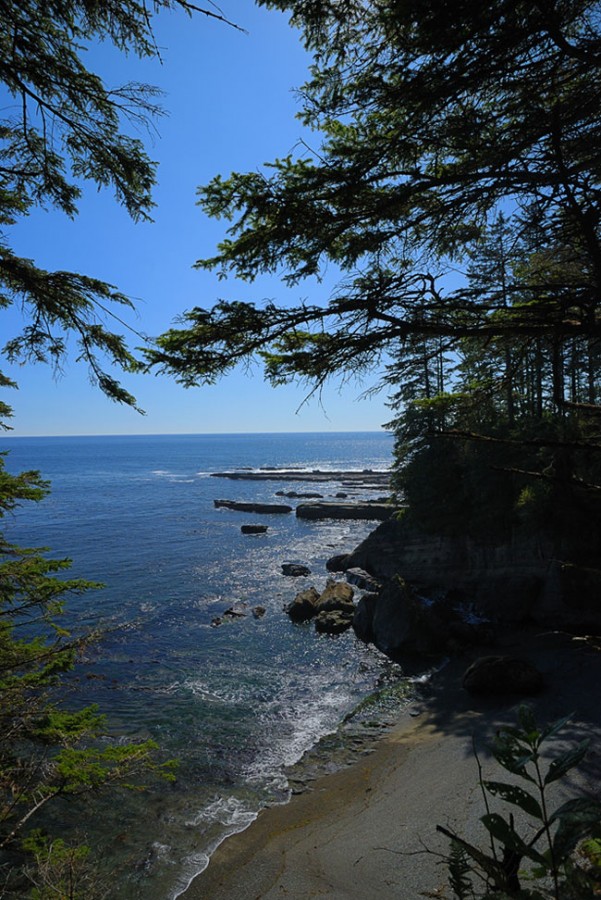
When you're having trouble framing, try shooting through something in the foreground, such as trees or other objects, that will create a natural frame for your shot and add depth to your photo. Shot with Nikon D80, lens, 1/200 sec., F / 7.1, ISO 100, matrix metering.
Have fun while learning
Nikon School teachers do their best to not only teach photography students, help them find answers to any questions, make the learning process interesting, but also improve their shooting technique in the process.
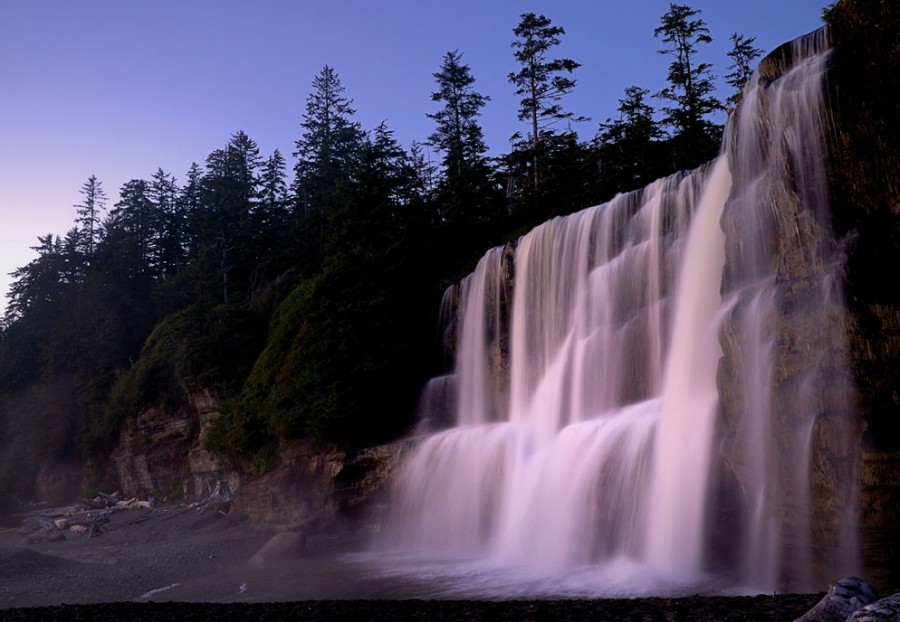
By operating in shutter priority mode, you can control the shutter width, allowing the camera to display the movement of the water flow. You must use a tripod, and remember: if there are people in the frame, they must stand still while the camera captures this magic. Taken with Nikon D80, AF-S DX NIKKOR 16-85mm f / 3.5-5.6G ED VR, 1/4 sec, f / 4.5, ISO 100, manual exposure, matrix metering.
Reed believes that he learns best about photography in a group. “I myself learn from student questions and love to tell stories of my failures - it's fun and helps students understand that we all make mistakes, no matter how long we have been in photography. What matters is what we can learn from these mistakes. "
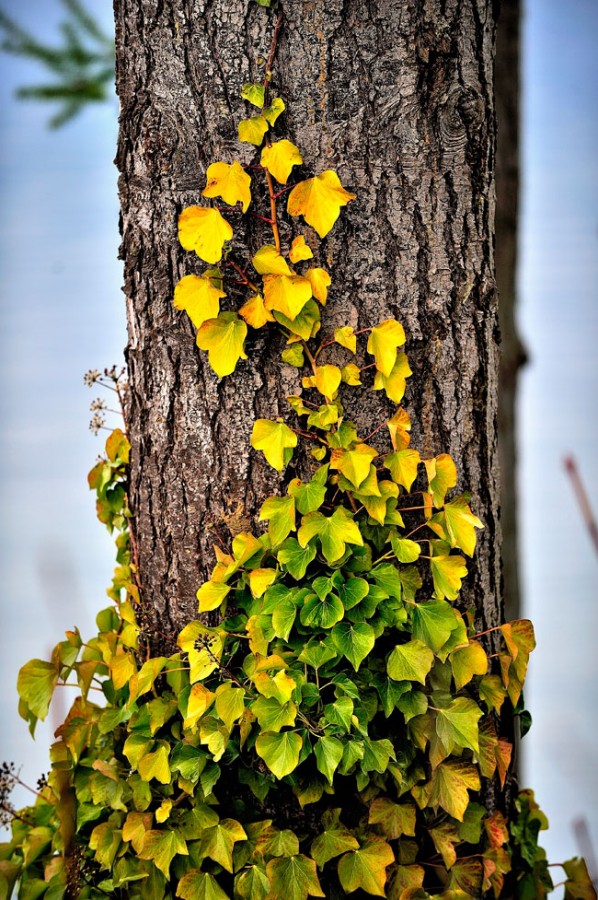
It was filmed on a cloudy day at Stanley Park, Vancouver, British Columbia. Since this frame was shot at low contrast, the picture control mode was set. It was important to turn VR to ON and use a fast shutter speed since the photo was taken handheld. Taken with Nikon D3, AF-S VR Zoom-NIKKOR 70-200mm f / 2.8G IF-ED, 1/500 sec, f / 3.5, ISO 200, auto white balance.
Light. Camera. Motor
Mark Suban is one of the instructors in the HD-SLR Multimedia workshop, which explains how to shoot quality video.
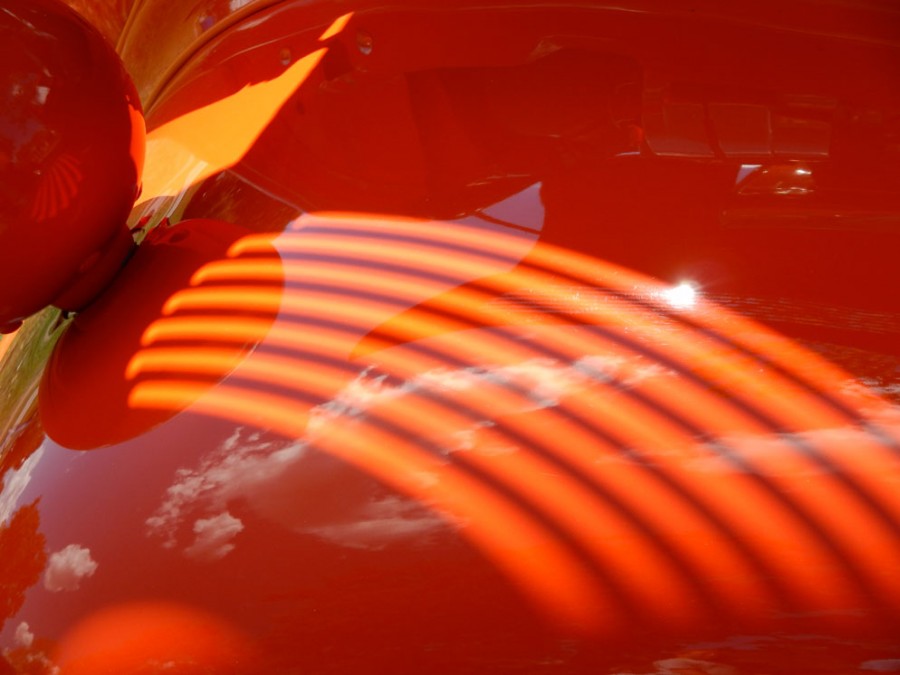
This photo demonstrates the benefits of hard framing, emphasizing the play of light and shadow. Photo taken at the local auto dealership in Indian Head, Maryland, using the COOLPIX S800c. The camera was set to auto with a shutter speed of 1/400 sec, f / 4.7, ISO 125 to capture fine details and reproduce color at maximum sharpness. The image was then uploaded to the mobile device.
Mark says that most of the students in HD-SLR multimedia classes are advanced users who want professional advice and get the most out of their cameras. “My favorite part of teaching photography is sharing tips and tricks for using Nikon products.”
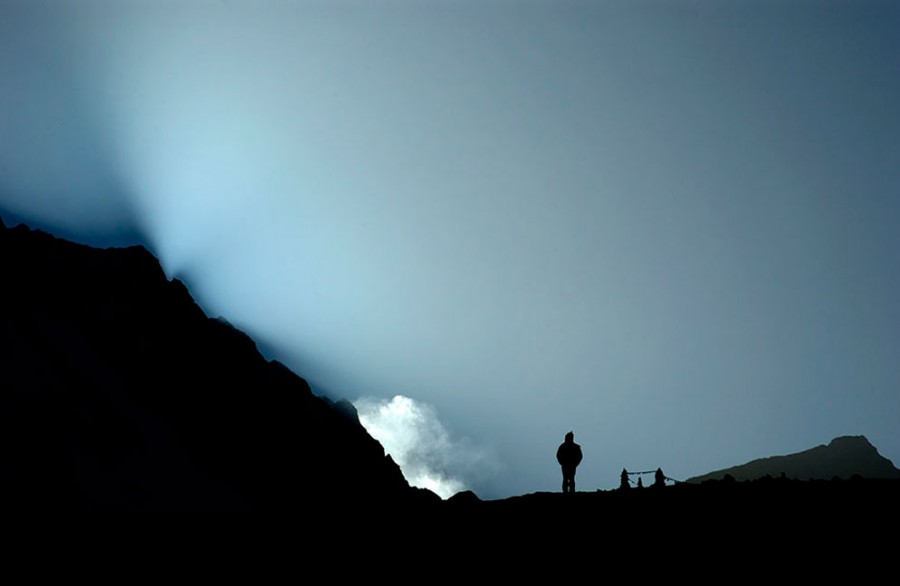
A man stands on a ridge in the Karakorum mountain range while the sun rises over Mount Lupsi. By exposing to a dark sky, you can capture the first rays of the rising sun, illuminating the ridge of the mountain. Shot with Nikon D1X, 85mm f / 2.8 PC-Nikkor lens, 1/1250 sec, f / 10, aperture priority, matrix metering.

